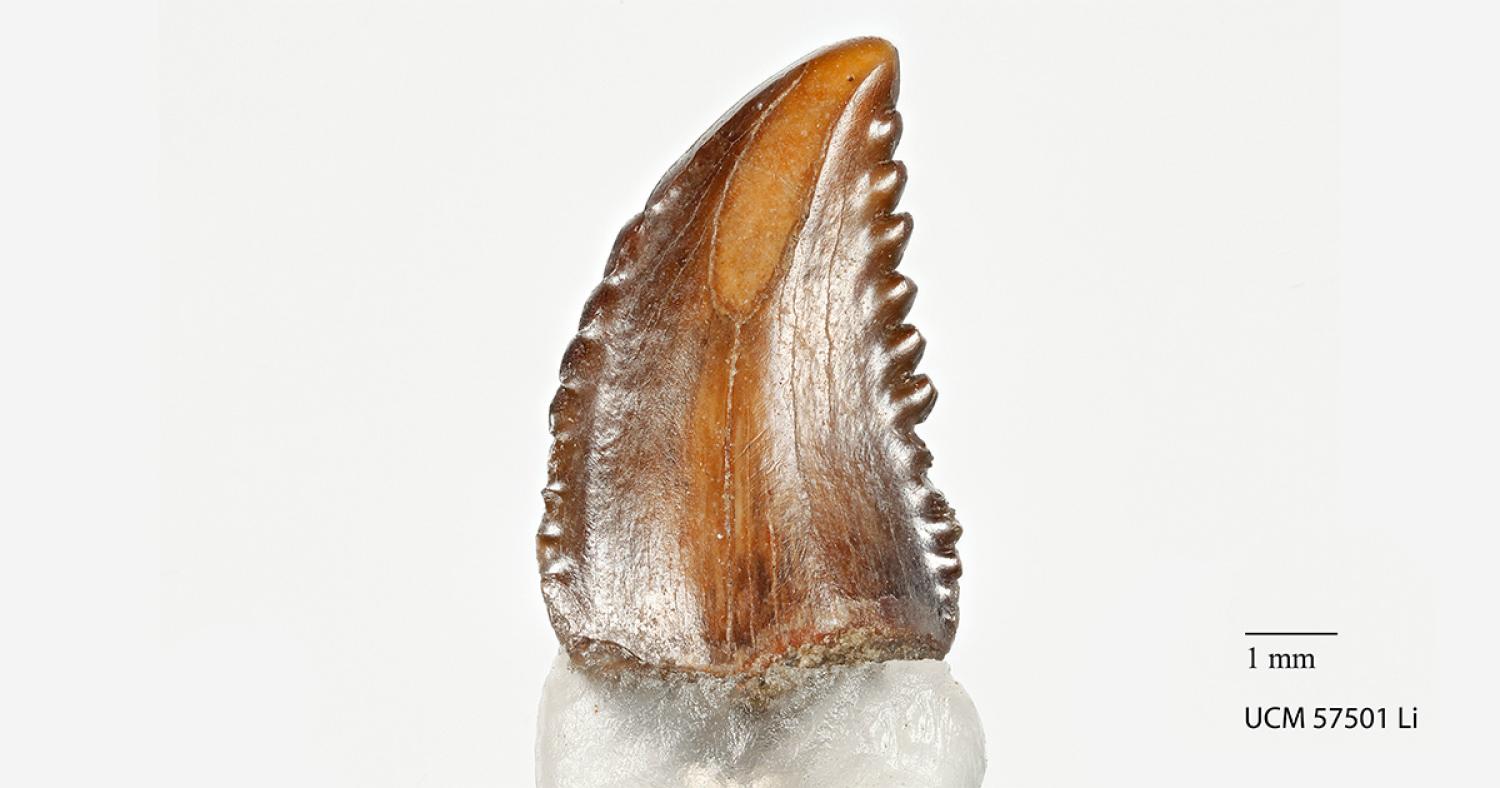The CU Museum is closed until January 8, 2026.
During this time, collection visits will be available by appointment and other special access requests will be considered on a case-by-case basis.
Please email cumuseum@colorado.edu for more information.
Troodon Tooth
This is a tooth from a dinosaur called Troodon, a small three feet tall meat-eater that lived in North America during the Late Cretaceous Period, about 77 to 66 million years ago. The 1 mm scale gives us a clue on just how small Troodon was as this tooth is approximately 4 mm in width, its teeth were smaller than our teeth! Troodon was one of the first dinosaurs ever discovered from North America and was first described by famous paleontologist Joseph Leidy in 1856. Leidy gave this animal the name Troodon meaning “wounding tooth”. Unlike other meat-eating dinosaurs, Troodon teeth have very distinctive serrations that resemble the serrations found on the teeth of herbivorous reptiles. This suggests that Troodon may have been omnivorous (kind of like us), instead of a strict meat-eater.
Troodon fossils have been found in several locations in the western United States, from west Texas all the way to northern Alaska. Teeth collected in Alaska are much larger than teeth collected in more southern locales, suggesting that the Alaska Troodon was a much bigger individual than its southern counterparts. This specimen was collected in western Colorado in the Williams Fork Formation. Geologic formations are units of rock layers (bedding or strata) in which geologists can correlate the layers and even use the layers as geologic time markers. CU Museum paleontologists are currently conducting field research in the Williams Fork Formation, primarily looking for fossils of early mammals such as Meniscoessus who were contemporaneous with Troodon during the Late Cretaceous. Hopefully, we will be able to find more Troodon fossils this summer too!
Catalog Number: UCM 57501
Taxonomy: Troodon formosus
Location: Rio Blanco Co., Colorado
Age: Late Cretaceous, Campanian
Stratigraphy: Williams Fork Formation
Fiorillo, A. R. 2008. On the Occurrence of Exceptionally Large Teeth of Troodon (Dinosauria: Saurischia) from the Late Cretaceous of Northern Alaska. PALAIOS 23:322–328.
Holtz, T. R., D. L. Brinkman, and C. L. Chandler. 1998. Denticle Morphometrics and a Possibly Omnivorous Feeding Habit for the Theropod Dinosaur Troodon. GAIA 15:8.
Lillegraven, J. A. 1987. Stratigraphic and Evolutionary Implications of a New Species of Meniscoessus (Multituberculata, Mammalia) from the Upper Cretaceous Williams Fork Formation, Moffat County, Colorado. Dakoterra 3, p. 46-56.
Stevens, K. A. 2006. Binocular Vision in Theropod Dinosaurs. Journal of Vertebrate Paleontology 26:321–330.


